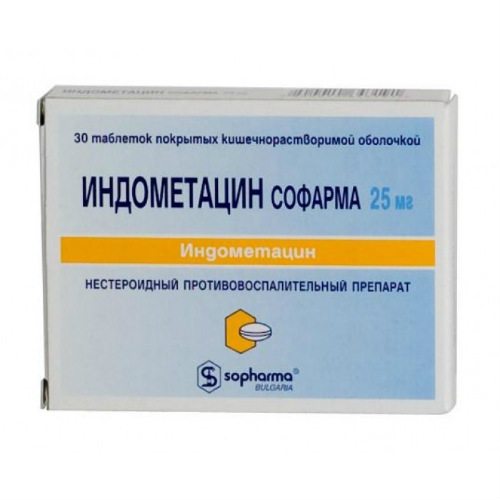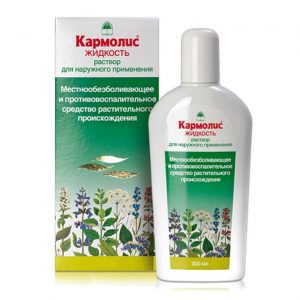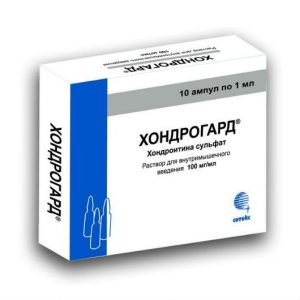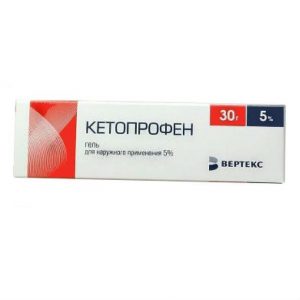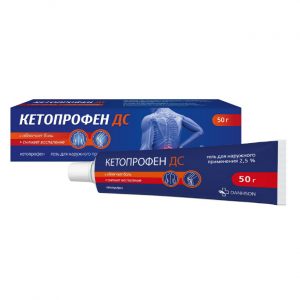Description
Release form
Coated tablets
Packing
30 pcs.
Pharmacological action of
Indomethacin has anti-inflammatory, analgesic and antipyretic effects, as well as some antiaggregant action. Suppresses the activity of anti-inflammatory factors, reduces platelet aggregation. Inhibiting cyclooxygenase 1 and 2, disrupts the metabolism of arachidonic acid, reduces the amount of prostaglandins (Pg) both in the focus of inflammation and in healthy tissues, and suppresses the exudative and proliferative phases of inflammation.
When applied externally, it causes a weakening or disappearance of a pain syndrome of a rheumatic and non-rheumatic nature (including pain in the joints at rest and during movement, reduces morning stiffness and swelling of the joints, helps increase the range of motion in inflammatory processes that occur after operations and injuries , quickly relieves both spontaneous pain and pain during movement, reduces inflammatory edema at the wound site).
Indications
Joint syndrome (rheumatoid arthritis, osteoarthritis, ankylosing spondylitis, gout), pain in the spine, neuralgia, myalgia, traumatic inflammation of the soft tissues and joints, rheumatism, diffuse connective tissue diseases, dysmenorrhea. As an adjunct in infectious and inflammatory diseases of the ENT organs, adnexitis, prostatitis, cystitis.
Contraindications
Hypersensitivity to indomethacin, erosive and ulcerative lesions of the gastrointestinal tract in the acute phase, aspirin triad, hematopoiesis, severe impaired liver and / or kidney function, severe forms of chronic heart failure, arterial hypertension, pancreatitis, III trimester of pregnancy, children under 14 years old for rectal use: proctitis, recent rectal bleeding.
Special instructions
Use with caution in elderly patients, as well as in diseases of the liver, kidneys, gastrointestinal tract in the anamnesis, with dyspeptic symptoms at the time of use, arterial hypertension, heart failure, immediately after serious surgery, with parkinsonism, epilepsy.
For indications of a history of allergic reactions, NSAIDs are used only in urgent cases.
During the treatment period, systematic monitoring of liver and kidney function and the picture of peripheral blood is necessary.
Concomitant use with acetylsalicylic acid and other NSAIDs is not recommended.
Indomethacin should not be used concurrently with diflunisal.
With the simultaneous use of indomethacin with lithium preparations, the possibility of symptoms of the toxic effects of lithium should be borne in mind.
Influence on the ability to drive vehicles and control mechanisms
During treatment, one should refrain from potentially dangerous activities related to the need for concentration and increased speed of psychomotor reactions.
Tablets, enteric coated with a white or almost white color, round, biconvex at the fracture of the tablet, two layers are visible – nucleus white or white with a yellowish tint and film membrane.
1 tab.
indomethacin 25 mg
Excipients: lactose monohydrate 41.6 mg, potato starch 10 mg, microcrystalline cellulose 16 mg, povidone 2.5 mg, magnesium stearate 0.9 mg.
Composition of the film coat: cellacephate 2.2 mg, polysorbate-80 0.72 mg, titanium dioxide 1.08 mg.
Dosage and administration
Inside, during or immediately after a meal, without chewing, with plenty of water.
Adults: 25 mg 2-3 times a day, if necessary, the daily dose can be increased to 100 mg, divided into 4 doses, with an acute attack of gout – up to 50 mg 3 times a day.
Children over 14 years of age: 1.52.5 mg / kg / day, divided into 3-4 doses.
Side effects of the
Digestive system: nausea, anorexia, vomiting, abdominal pain and discomfort, constipation or diarrhea, erosive-ulcerative lesions, bleeding and perforation of the gastrointestinal tract rarely – intestinal strictures, stomatitis, gastritis, flatulence, meteorism, bleeding intestines or from a diverticulum, jaundice, hepatitis.
From the side of the central nervous system and peripheral nervous system: dizziness, headache, depression, rarely feeling tired – anxiety, fainting, drowsiness, cramps, peripheral neuropathy, muscle weakness, involuntary muscle movements, sleep disorders, mental disorders (depersonalization, psychotic episodes), paresthesia, dysarthria, parkinsonism.
From the cardiovascular system: edema, increased blood pressure, tachycardia, chest pain, arrhythmia, palpitation, arterial hypotension, congestive heart failure, hematuria.
Allergic reactions: rarely – itching, urticaria, angiitis, erythema nodosum, skin rash, exfoliative dermatitis, Stevens-Johnson syndrome, erythema multiforme, toxic epidermal necrolysis, hair loss, acute respiratory distress, a sharp drop in blood pressure, anaphylactic, anaphylactic reactions, anaphylactic, dyspnea, bronchial asthma, pulmonary edema.
From the hemopoietic system: rarely – leukopenia, petechiae or ecchymosis, purpura, aplastic and hemolytic anemia, thrombocytopenia, DIC.
On the part of the sensory organs: rarely – violation of the clarity of visual perception, diplopia, orbital and periorbital pain, tinnitus, hearing impairment, deafness.
From the urinary system: rarely – proteinuria, nephrotic syndrome, interstitial nephritis, impaired renal function, renal failure.
From the side of metabolism: rarely – hyperglycemia, glucosuria, hyperkalemia.
Other: rarely – vaginal bleeding, hot flashes, increased sweating, nosebleeds, enlargement and tension of the mammary glands, gynecomastia.
Local reactions: in the place of intramuscular administration in some cases – the formation of infiltrate, abscess with rectal administration, irritation of the rectal mucosa, tenesmus, exacerbation of chronic colitis are possible.
For external use: itching, redness, rash at the site of application.
Drug Interactions
With the simultaneous use of indomethacin, it can reduce the effects of saluretics, beta-blockers and enhance the effects of indirect anticoagulants.
With the simultaneous use of indomethacin and diflunisal, there is a risk of severe bleeding from the gastrointestinal tract.
With simultaneous use with probenecid, an increase in the plasma concentration of indomethacin is possible.
Indomethacin may decrease tubular secretion of methotrexate, resulting in increased toxicity.
When used concomitantly with NSAIDs, the toxicity of cyclosporine increases.
Indomethacin at a dose of 50 mg 3 times / day increases the concentration of lithium in the blood plasma and reduces the clearance of lithium from the body in patients with mental illness.
With the simultaneous use of indomethacin with digoxin, an increase in the concentration of digoxin in the blood plasma and an increase in T1 / 2 of digoxin are possible.
Overdose
Symptoms: nausea, vomiting, severe headache, dizziness, impaired memory, disorientation. In severe cases of paresthesia, numbness of the limbs, convulsions.
Treatment: symptomatic therapy. Hemodialysis is ineffective.
Pharmacy terms
Prescription
dosage form
tablets
